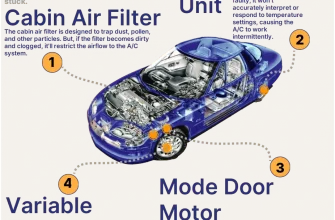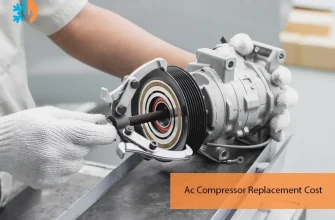When it comes to automotive engineering, few components are as crucial yet often overlooked as the steering rack and pinion mechanism. This ingenious system is at the heart of a vehicle’s steering functionality, translating the driver’s input into precise directional control. Let’s explore the intricacies of this mechanism and understand why it is so vital to modern vehicles.
What is a Steering Rack and Pinion?
The steering rack and pinion is a type of linear actuator that converts rotational motion into linear motion. It consists of two primary components: the rack (a flat, toothed bar) and the pinion (a circular gear). When the steering wheel is turned, it rotates the pinion gear, which engages the rack. This engagement moves the rack side to side, steering the vehicle’s wheels accordingly.
How It Works
At its core, the operation of the rack and pinion is quite simple:
- Driver Input: The driver turns the steering wheel.
- Pinion Movement: This rotation is transferred to the pinion gear connected to the steering column.
- Rack Engagement: As the pinion turns, its teeth engage with the teeth of the rack.
- Wheel Direction: The movement of the rack pushes or pulls the steering arms, pivoting the wheels to the left or right.
This direct connection between the steering wheel and the wheels of the vehicle allows for precise steering control, making it an essential part of the driving experience.
Benefits of Rack and Pinion Steering
The rack and pinion system offers several advantages over other steering mechanisms, such as recirculating ball steering:
- Compact Design: The rack and pinion system is more compact, which saves space under the hood.
- Weight Efficiency: It tends to be lighter than other steering types, enhancing fuel efficiency.
- Precision Handling: Provides more accurate steering feedback, contributing to better handling and control.
- Reduced Play: Minimizes steering play, allowing for a more responsive feel while driving.
Common Issues and Maintenance
Like any mechanical system, the steering rack and pinion can experience wear and tear. Here are some common issues:
- Fluid Leaks: Power steering fluid leaks can lead to loss of steering assistance.
- Wear on Teeth: Over time, the teeth on the rack or pinion can wear down, leading to less effective steering.
- Loose Components: Loose mounting or connections can create play in the steering, affecting responsiveness.
Routine maintenance, such as checking and replacing power steering fluid and inspecting for leaks, can help prolong the life of the steering rack and pinion system.
The steering rack and pinion mechanism is a remarkable example of engineering that plays a pivotal role in vehicle control. Understanding its function and maintenance can enhance your appreciation for the intricate systems that make driving a safe and enjoyable experience. Whether you are a car enthusiast or a casual driver, knowing how your vehicle steers can empower you to keep it running smoothly and safely.
Exploring the Evolution of Steering Systems
As vehicles have evolved, so too have steering systems; The transition from traditional mechanical systems to the modern rack and pinion design reflects advancements in technology and a growing emphasis on driver experience. In the early days of automotive engineering, steering systems relied heavily on complex linkages and gears that often resulted in cumbersome handling and a lack of sensitivity. The introduction of the rack and pinion system marked a significant turning point, offering a more direct connection between the driver’s intentions and the vehicle’s response.
The Shift to Power Steering
With the advent of power steering in the mid-20th century, the experience of steering a vehicle was transformed. Power steering systems utilize hydraulic or electric assistance to enhance the driver’s input, making it easier to maneuver the vehicle, especially at lower speeds. This innovation not only improved comfort but also allowed for more precise handling. The combination of rack and pinion design with power steering technology has become the standard in most modern vehicles, creating a seamless operation that drivers have come to expect.
Future Trends in Steering Technology
Looking ahead, the future of steering mechanisms is poised for further innovation. As automotive manufacturers explore advancements in automation and artificial intelligence, steering systems are likely to evolve even more. Concepts such as steer-by-wire technology are gaining traction. This system eliminates the physical connection between the steering wheel and the wheels, relying instead on electronic signals to control steering. This could lead to lighter vehicles, enhanced safety features, and even the potential for fully autonomous driving.
Integrating Advanced Safety Features
In conjunction with these technological advancements, safety is becoming a primary focus in steering system design. Modern vehicles are increasingly equipped with features like lane-keeping assist and adaptive steering, which use sensors to monitor the vehicle’s position and automatically adjust steering inputs to help maintain safe driving paths. These innovations not only enhance the driving experience but also contribute to reducing accidents caused by human error.
The Importance of Regular Maintenance
As steering systems become more sophisticated, the importance of regular maintenance cannot be overstated. Drivers should be aware of the signs that indicate potential issues with their steering mechanisms. Common symptoms include unusual noises while turning, vibrations in the steering wheel, or difficulty in steering. These warning signs should prompt immediate attention, as neglecting them can lead to more serious problems and compromise safety.
The steering rack and pinion mechanism is more than just a mechanical component; it is a vital part of the driving experience. As technology continues to advance, the integration of innovative features in steering systems promises to enhance safety, comfort, and control for drivers. Understanding how these systems work and their significance can empower drivers to appreciate the complexity and engineering marvel that lies beneath the surface of their vehicles. Whether navigating city streets or embarking on a long road trip, a well-maintained steering system is essential for a smooth and safe journey.










This article provides a clear and concise explanation of the steering rack and pinion mechanism. I learned a lot about its importance in automotive engineering!
Well written and very informative! The details about compact design and weight efficiency really stood out to me as key advantages of this system.
Great read! The benefits of the rack and pinion system were well articulated, making it easy to understand why it
I never realized how crucial the steering rack and pinion is for vehicle handling. The breakdown of its operation was very informative!
I appreciate how this article highlights the engineering behind everyday driving. It